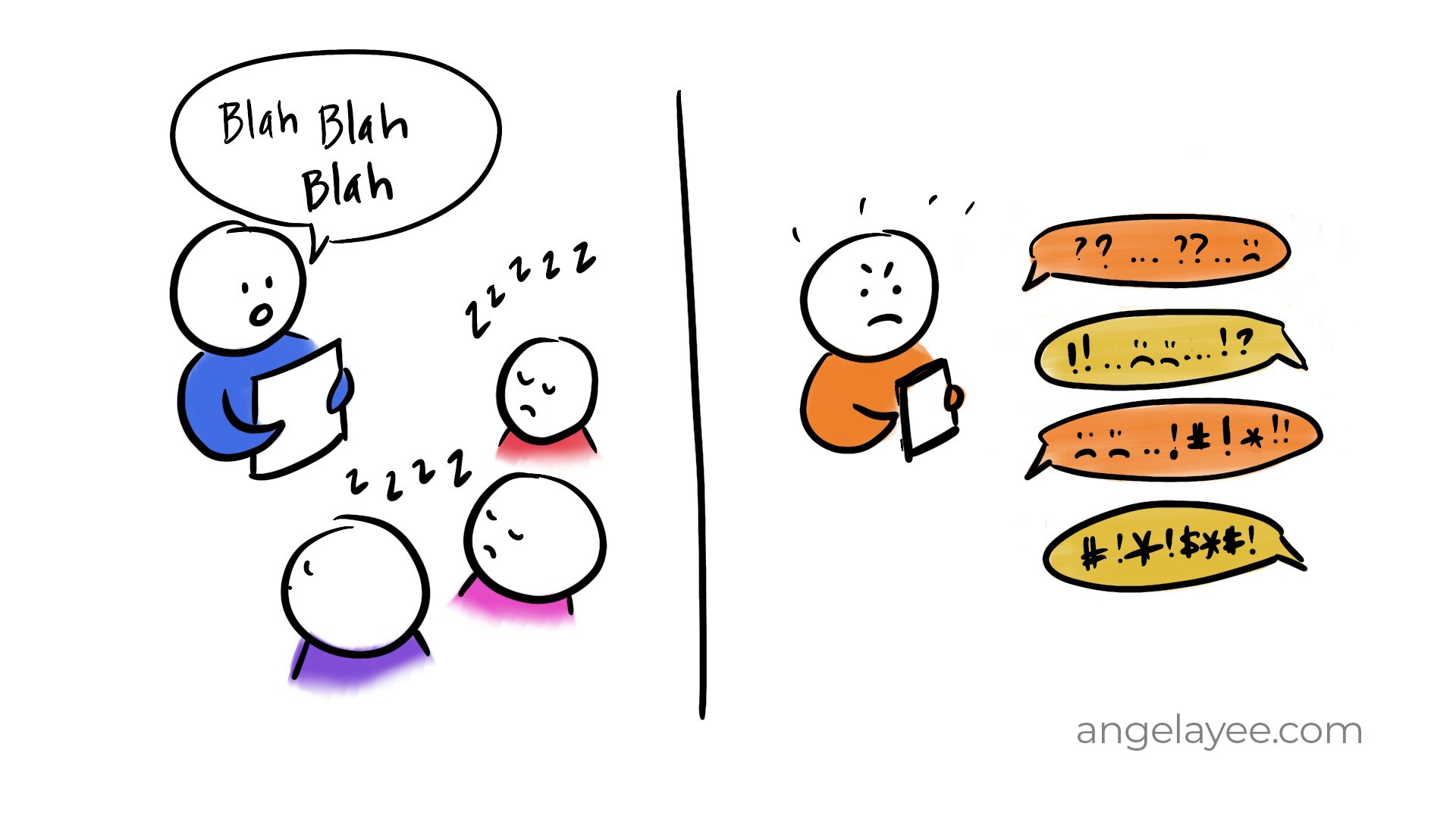Match the Media to the Message: How to Communicate Effectively and Avoid Misunderstanding
There’s a Theory ABOUT COMMUNICATION
Have you ever found yourself drifting off during a meeting, thinking, "This could've just been an email!"?
Or ….
Have you been part of a text conversation that exploded into arguments?
There’s a reason for that.
There's a theory called Media Richness Theory, or Information Richness Theory. It helps match the type of information with the best way to communicate it.
(The theory uses the term media to describe the different means of communication, but you can also use the word channel.)
In short…
The more nuanced or complex your messages are, the more they should be shared using channels that provide lots of cues.
How Media Richness Works
When you chat with people face-to-face, it's easy to read their body language and pick up on nonverbal cues. Even subconsciously, you catch micro-expressions. Emotions flow more naturally in conversation.
But in virtual meetings, everyone's shrunk down on a little screen. It's awkward, especially when multiple people speak at once.
Meeting in person gives you a rich context. Virtual meetings? Not so much.
When it comes to meetings, virtual channels are a leaner medium. In-person is a richer medium.
Now, expand all the communication channels to include writing.
In emails, all nonverbal communication vanishes. Readers must interpret solely based on the words used. There are no expressions or nuances to grasp, making misinterpretation more likely.
Shrink that down to text messages. You lose all body language, and words are reduced to snippets.
Include text, virtual meetings and face-to-face, and we get a wide range of lean to rich media.
FACTOR IN COMPLEXITY OF THE TOPIC
Then there is message complexity.
A simple message is clear, easily understood, and doesn't carry much emotional weight. For example, updating that a process is complete or a file has been updated is straightforward information.
But complex messages are less clear, open to interpretation, multi-faceted, or carry emotional weight. For instance, announcing staffing changes or dealing with contentious issues can be anxiety-provoking.
The Media Richness Theory emphasizes matching message complexity with channel richness.
You don’t want to drop emotional bombs via text. And simple updates don’t belong in in-person meetings unless there is an opportunity for discussion.
Sharing your relationship frustrations with your significant other over text messaging makes things worse. (Not recommended!) Neither of you can read body language or pick up cues. Misunderstandings caused by a lack of context can lead to hurt feelings.
Communication is complex, with various nuances and approaches. But remembering this principle helps leaders quickly decide how to communicate important messages:
Match the medium with the message messiness.
In a nutshell:
Simple message? Use a lean channel.
Complex message prone to misunderstanding or messiness? Use a rich channel.
Looking back at the illustration at the beginning of this article, that dozing at a meeting and explosions coming through your phone? Mismatch of message with media.
So, if people are bored by endless updates in a meeting, maybe it’s time to reconsider.
Sure, updates are crucial if there'll be discussion, but if it's straightforward information, use a simpler method. Save in-person discussions for more complex topics.
Want to develop and improve team communication?
Contact us for a workshop on improving team communication and performance!
In-person or live virtual training available.
Tips for Message Matching
Consider the following summary tips to effectively communicate and reduce chance of misunderstanding:
📊 Complexity and emotional weight: Evaluate the intricacy of the message and its emotional significance to determine the appropriate level of richness needed.
💬 Most suitable communication channel: Choose a channel that aligns with the richness required for the message, considering factors like nonverbal cues, immediacy, and interactivity.
💰Use rich channels for complex messages: Opt for face-to-face meetings (or video conferencing if face-to-face is impossible) for conveying nuanced or emotionally charged information, enabling real-time feedback and nonverbal communication cues.
📝 Reserve lean channels for simple updates: Use written communication, such as emails or text messages, to convey straightforward information or updates that don’t require immediate feedback or emotional depth.
🔄 Adapt communication strategies based on message complexity: Adjust your communication approach according to the complexity and urgency of the message to achieve effective information transmission and understanding.
OTHER ARTICLES YOU MAY ENJOY:
The Thinker Pool: How Information Empowers Your Team
From Ambiguity to Action: Helping Your People Weather a Time of Crisis
How to Factor Your Team Culture into Decision-Making






